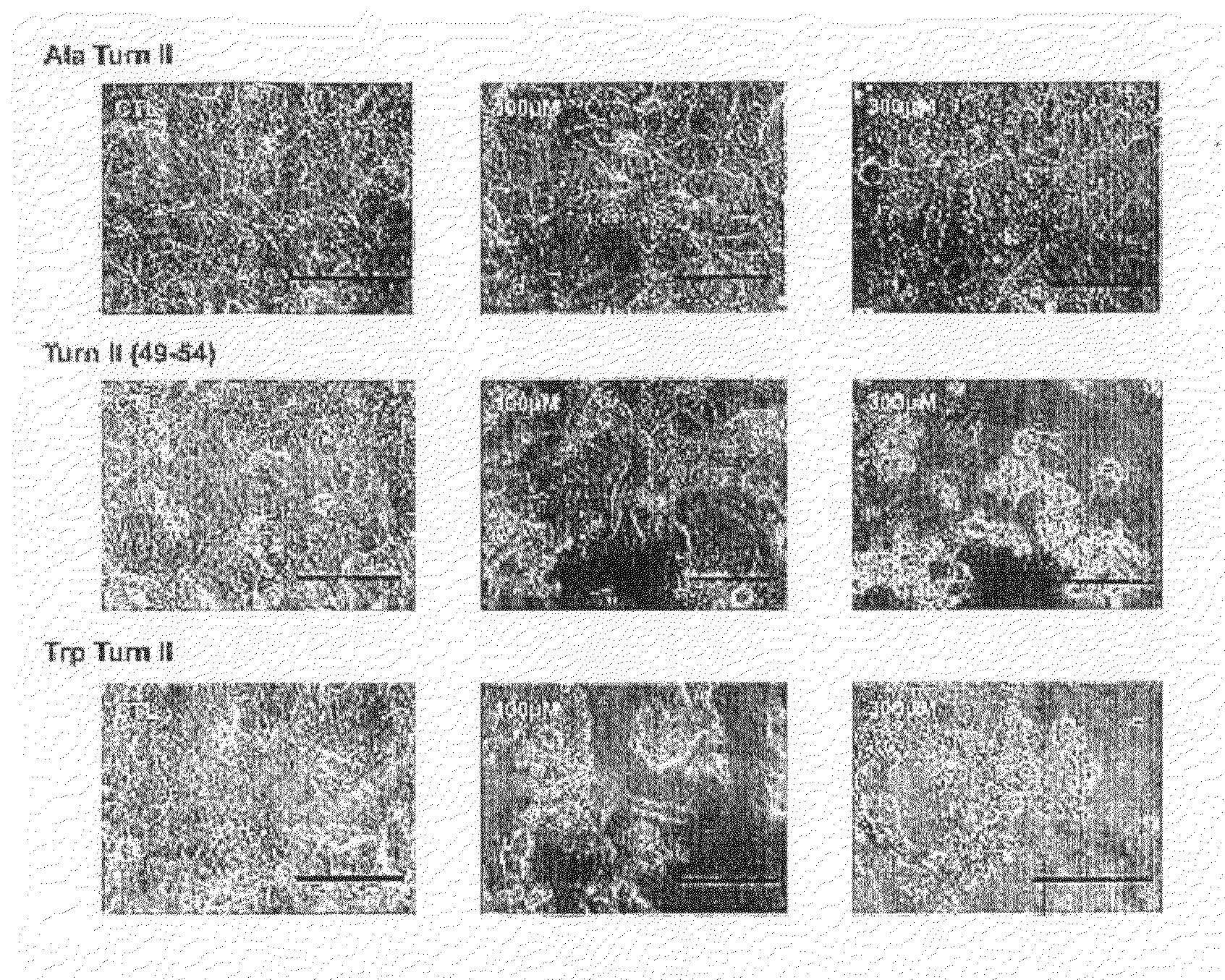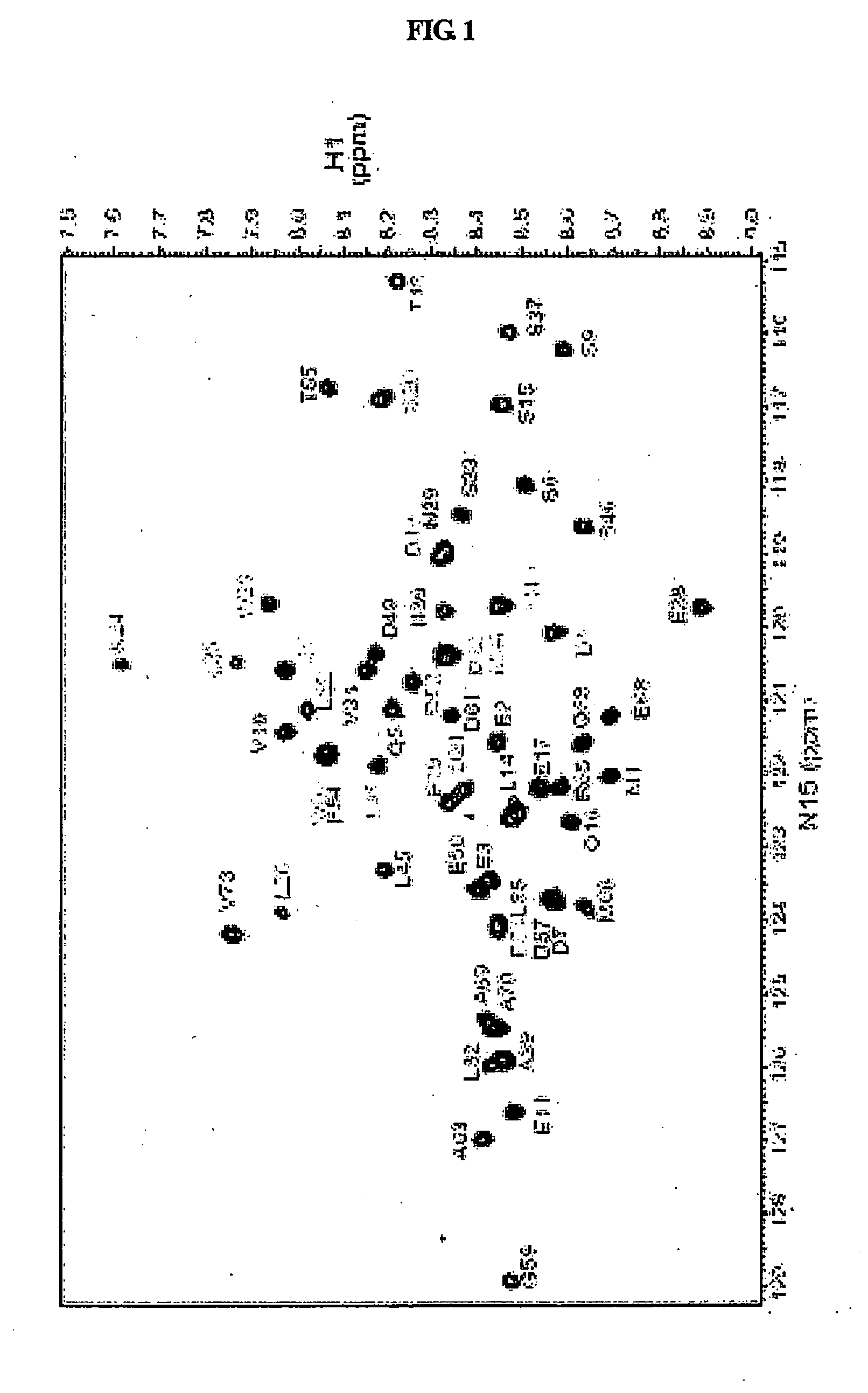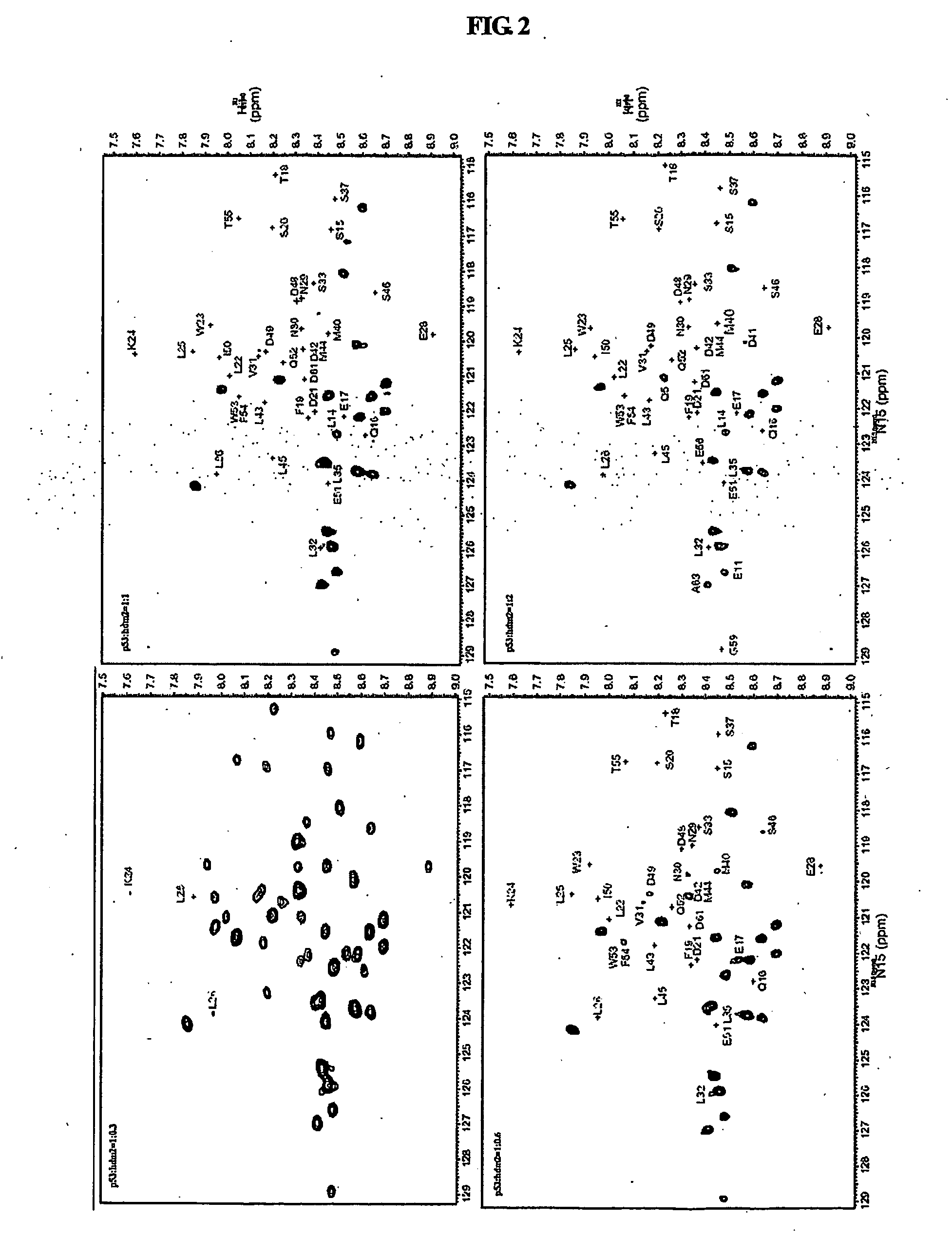Peptides for Inhibiting MDM2 Function
- Summary
- Abstract
- Description
- Claims
- Application Information
AI Technical Summary
Benefits of technology
Problems solved by technology
Method used
Image
Examples
example 1
Production of Human p53 TAD and mdm2 Protein
[0071]The p53 TAD domain (SEQ ID NO. 1) corresponding to residues 1-73 of the TAD of human p53 was cloned (Lee, H. et al. (2000) J. Biol. Chem. 275, 29426-29432). Oligonucleotides for a forward primer of SEQ ID NO. 2 and a reverse primer of SEQ ID NO. 3 were synthesized. Using the primers, PCR was carried out, and the PCR product was inserted into an E. coli expression vector pGEX-2T (Stratagene) using BamHI and HindIII sites.
Forward primer:5′-GGTCGGATCCATGGAGCCGCAGTCA-3′(SEQ ID NO. 2)Reverse primer:3′-GGTGAAGCTTACACGGGGGGAGCAGCCTC-5′(SEQ ID NO. 3)
[0072]The p53 TAD(1-73) contained glycine and serine derived from the vector at its N-terminal end, and was expressed as a protein fused with glutathione transferase (GST) at its N-terminal end, GST-p53 TAD(1-73). For overexpression of GST-p53 TAD(1-73), transformed BL21(DE3) E. coli cells were cultured in M9 minimum medium at 37° C. When the culture reached an OD600 value of 0.7, IPTG (isopropyl...
example 2
Synthesis of p53 Fragment Peptides
[0074]p53 fragment peptides were synthesized by a solid-phase method using an APEX 348W peptide synthesizer (Advanced Chemtech). The synthesized peptides were as follows:
p53 (39-57)AMDDLMLSPDDIEQWFTED;(SEQ ID NO. 5)p53 (49-54)DIEQWF;(SEQ ID NO. 6)
[0075]Ala-substituted peptide having I50A / W53A / F54A substitutions relative to the native p53(49-54) peptide—DAEQAA(SEQ ID NO. 7);
p53 (39-48)AMDDLMLSPD;(SEQ ID NO. 8)p53 (49-57)DIEQWFTED;(SEQ ID NO. 9)
[0076]Ala-substituted peptide having I50A / W53A / F54A substitutions relative to the native p53(49-57) peptide—DAEQAATED (SEQ ID NO. 10);
[0077]Trp-substituted peptide having I50W / F54W substitutions in the native p53 (49-54) peptide—DWEQWW (SEQ ID NO. 11); and
[0078]Val-substituted peptide having I50V / W53V / F54V substitutions relative to the native p53(49-54) peptide—DVEQVV (SEQ ID NO. 12).
[0079]The C-terminal end of all of the synthesized p53 fragment peptides was amidated and purified with a Vydac C18 HPLC column a...
example 3
NMR Spectroscopy
[0080]All NMR data were measured using a Varian Unity INOVA 600 MHz NMR spectrometer at 5° C. and 25° C. 15N—1H HSQC (heteronuclear single quantum coherence spectroscopy) spectra were collected with spectral widths of 8000 Hz in the 1H dimension and 1800 Hz in the 15N dimension, and with 1024 data points in the t2 domain and 256 data points in the t1 domain.
[0081]Chemical shift assignment studies for a mdm2(3-109) protein in a free and bound states were performed using three-dimensional (3D) HNCA and HNCOCA experiments of 15N, 13C-mdm2(3-109), and 15N-edited TOCSY and 15N-edited NOESY (mixing time=150 ms) experiments of 15N-mdm2(3-109), all of which were carried out at 25° C. 15N-mdm2(3-109) and 15N, 13C-mdm2(3-109), dissolved in a buffer solution (25 mM Tris HCl (pH 7.5), 150 mM NaCl, 2 mM DTT, 0.1 mM PMSF, 0.1 mM EDTA, 0.1 mM benzamidine, 0.02% NaN3), were subjected to 3D NMR experiments in which mdm2(3-109) in a free state was used at 0.4 mM. A 3D NMR experiment f...
PUM
 Login to View More
Login to View More Abstract
Description
Claims
Application Information
 Login to View More
Login to View More - R&D
- Intellectual Property
- Life Sciences
- Materials
- Tech Scout
- Unparalleled Data Quality
- Higher Quality Content
- 60% Fewer Hallucinations
Browse by: Latest US Patents, China's latest patents, Technical Efficacy Thesaurus, Application Domain, Technology Topic, Popular Technical Reports.
© 2025 PatSnap. All rights reserved.Legal|Privacy policy|Modern Slavery Act Transparency Statement|Sitemap|About US| Contact US: help@patsnap.com



